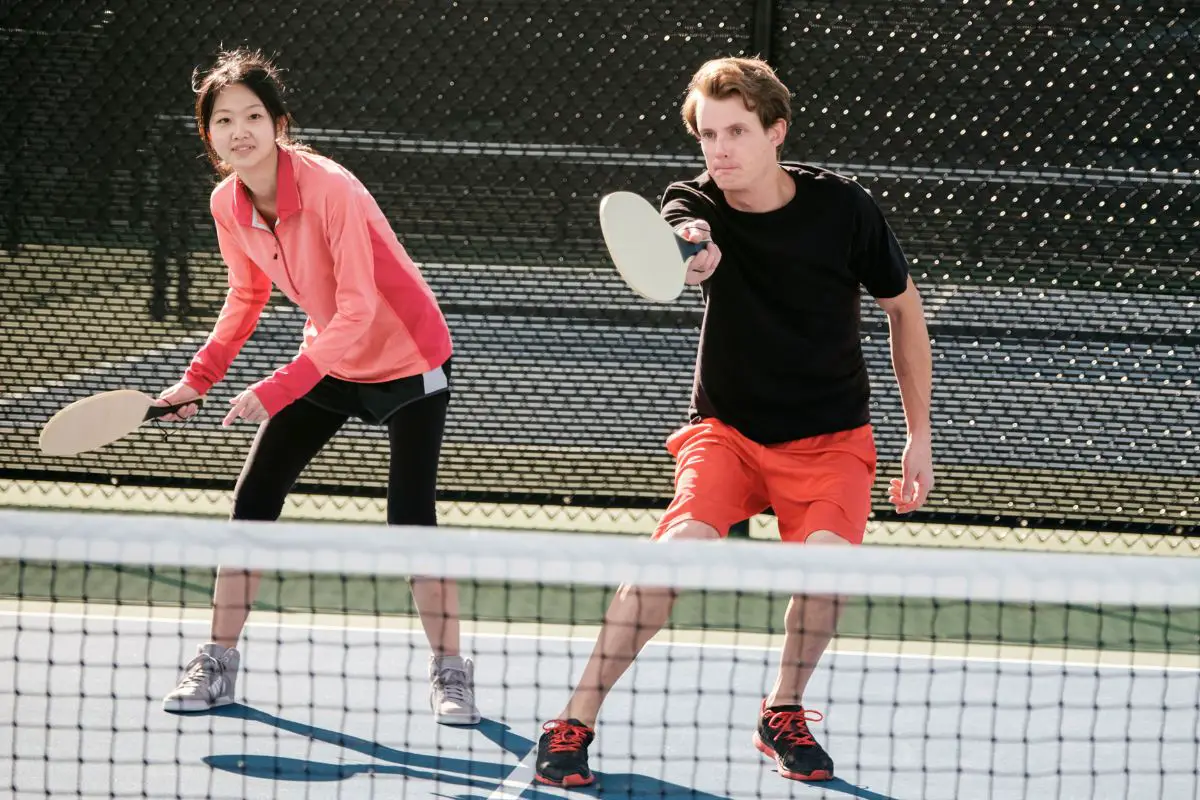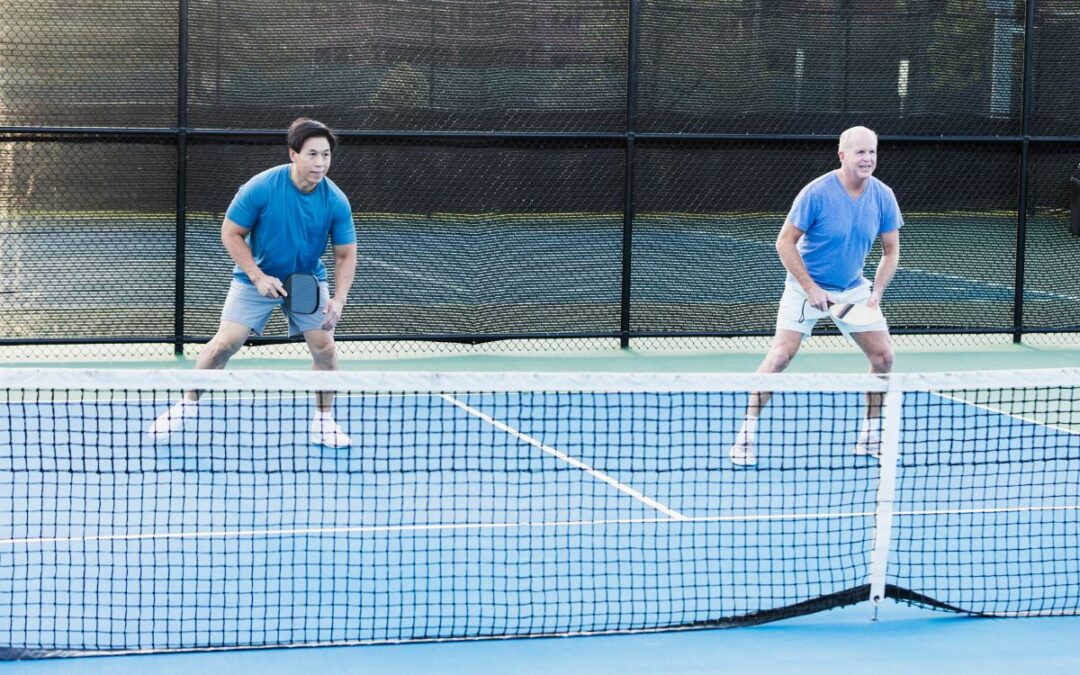As you become an advanced Pickleball player, you may start to notice the wide variety of different techniques that are used.
The type of shots players take can be obvious while others can be far more confusing. There is a strong chance that you will be unsure of the name of the technique that you have seen.
What Is Stacking?
Whenever both players on the same team are lined up on the same side prior to serving, this is called stacking.
You will likely have seen this take place whenever one team is serving. This technique is called stacking because the players on one team are stacked on a specific side as opposed to occupying both sides of the court.
This position clearly differs from traditional pickleball positioning.
What Are The Rules Of Pickleball Stacking?
There are no specific rules that prevent pickle balls players from standing on any side that they choose. Of course, some rules will actually dictate where the players are allowed to stand.
When you are considering using a stacking technique, you will need to follow these rules:
- A specified player must hit the serve
- A specified player will need to hit the return
- A server cannot have a foot inside the line whenever they are serving the ball.
- A ball needs to bounce prior to it being returned, and it also needs to bounce on the third shot.
After this, players will be able to move to whichever portion they desire.
How To Stack Efficiently?
Prior to getting into the benefits of stacking, you will firstly need to know how to stack correctly.
Traditionally, one player from each time will stand on either side of the center. The left side is known as the ad side and the right side is known as the deuce side.
For the vast majority of the time, players will stick to their starting side.
However, stacking means that this changes dramatically. Both players will stay on either the deuce or ad side until the serve and return have occurred.
Once players have picked their side, then the game looks far more traditional.
How To Stack On The Serve
Whenever you are stacking on the serve, you will usually see both players standing on the side of the serve.
For even points, they will be stood on the deuce side. For odd points, then they will be stood on the ad side. This does not mean that they’re in the same square. Usually, the non-serving player will stand close to the baseline.
Once the serve has been hit, the players will rotate into the position that they had agreed to play from in order to prepare for the third shot.
Sometimes, teams will make the decision to make the serving player responsible for the third shot. They will then hesitate for a little while longer prior to changing their positions.

How To Stack On The Return Of Serve
Stacking on the return of a service is similar to the aforementioned stack. Except, the player who is not responsible for returning will be stood out of bounds, located by the kitchen line.
As their teammate makes the return, the two players will then rotate to their specified positions.
When To Stack
You may be wondering how to know when to stack. Usually, stacking will occur whenever you want to take advantage of a specific player’s strengths.
For instance, if a player on a team has a more dominant forehand, then the team may wish to keep this player in a specific position where their forehand is near the centerline.
This inherently allows the player to take the opportunity to poach using their forehand.
If one of the players uses their left hand, then stacking can be useful to ensure that both forehands are kept on the centerline.
In comparison, if a team that has strong left and right-hand players allows them to be positioned where neither of their forehands is in the middle, this could give a major advantage to the other team during that specific round of play.
Stacking can also be used in order to overcome weaknesses in specific players, like if someone’s backhand is not as strong. Stacking inherently maximizes mobility.
For instance, a player that has more agility will play on the stacking side in order to cover more overheads than a player who is less agile.
What Are The Benefits Of Stacking?
Some may consider this strategy to be advanced, and that only the best players will be able to deploy it.
However, stacking can be used regardless of the level of play that you are playing at. However, it is essential that you discuss your technique with your team and communicate with them well during the match.
This may be an awkward technique initially, however, it will not take you long to master this technique.
Some of the main benefits of stacking include:
- If a player is left-handed, stacking will help them to keep their forehands centered.
- Stacking will allow teams to capitalize on the strength of individual players.
- Stacking will help to hide any of the player’s weaknesses.
- Stacking helps to enhance the mobility of certain players.
Conclusion
To conclude, this article has outlined how to implement stacking during pickleball and when it is the ideal time to do so.
You should consult with your teammates and practise this technique as much as possible in order to master it at an advanced level.
However, you do not need to be playing at an advanced level in order to start implementing this technique into your style of play.
Pickleball has become increasingly popular over the last few years, and if you are a serious player, you should consider learning as many techniques as possible in order to enhance your team’s play.
I hope that you have found this article to be insightful and informative. Thank you for reading.


